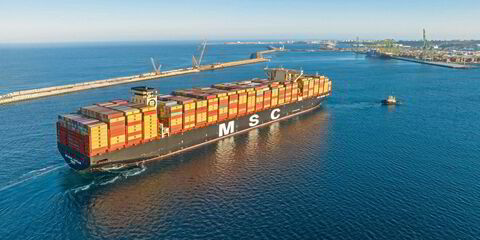Nearly 200 years ago, German philosopher-statesman Johann Wolfgang von Goethe said: “Thinking is easy, acting is difficult, and to put one’s thoughts into action is the most difficult thing in the world.”
Much the same could be said of the shipping industry’s ongoing efforts to apply Carbon Intensity Indicator (CII) regulations to their commercial operations, notably in the period charter market.
Six months after the launch of CII — a vital plank of the IMO’s laudable initiative to reduce seagoing carbon emissions — many owners and charterers are still trying to push the square peg of CII through the round hole of a time charter in which, in exchange for hire and an indemnity, the charterer is essentially free to employ the vessel as it sees fit.
The basic problem with this is that the overtly operational nature of CII means that a ship’s annual CII ‘rating’ — ranging from A to E — depends almost entirely on how the charterer decides to use the vessel as an economic asset.
And yet it is the owner who carries the regulatory burden of complying with CII and who will suffer the consequences of a ship receiving a lower rating.
And when a charterer’s use of the vessel negatively impacts the CII rating, perhaps hard won by the owner, who is to pay for those consequences, including the vessel’s potentially lower trading value once a new CII rating has been applied?
The owner’s predicament is arguably made worse because of the inherent structure of CII, chiefly how it fails to take into account the type of cargo carried, its lack of enforcement mechanisms or penalties for non-compliance, and its emphasis on distance sailed which discriminates against vessels in shortsea trades or which spend longer in port regardless of actual emissions.
Loud objections to Bimco’s CII Operations Clause for Time Charter Parties 2022, released last November, have meant that its uptake has been low to non-existent given its wholesale transfer to the charterer of an owner’s responsibility to ensure compliance with an agreed CII rating.
Shipowners report that charterers are simply not prepared to assume that obligation, leading both sides to seek solutions that allocate the risks and costs of CII more proportionately.
For lawyers tasked with advising their clients on how CII should be applied in both new and existing time charters, bespoke clauses are becoming a major part of the solution.
Bespoke response
These can borrow from the standard Bimco clause but with significant changes aimed at achieving a balance that owners and charterers can live with.
But reconciling on the one hand a carbon metric affecting the ship with, on the other, a time charterer’s effective control of that metric through its right to employ the vessel, remains a fundamental problem that a bespoke clause can only go so far to tackle.
Whether the IMO’s review of CII before January 2026 will lead to change remains to be seen.
For now, owners and charterers will need to do their best with the tools and advice available to them, including tailored wording to deal with the costs and risks of CII.
As Goethe also said: “Knowing is not enough; we must apply.”
Nick Austin is a partner in Reed Smith’s Transportation Industry Group, with a focus on shipping and international trading disputes in court, arbitration and mediation.
Do you have an opinion to share?
Email: news@tradewindsnews.com(Copyright)





